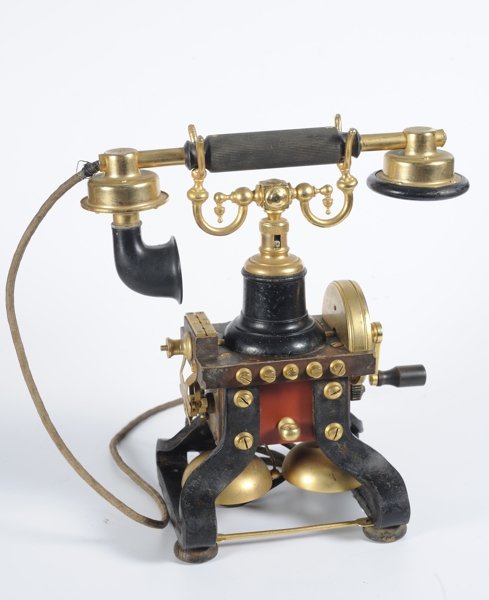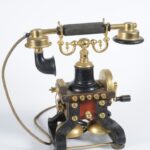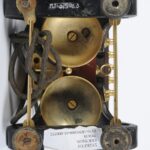Collections
L. M. Ericsson telephone desk set
Metal desk phone on a black metal base, sporting two gold-plated bell ringers and a battery box. It features a black, gold-plated handset with a plastic handle and a black, gold-plated metal handset cradle ("fork" design). On the right is a hand crank. Lars Magnus Ericsson, founder of the company, personally designed what is considered to be -- in terms of conception -- one of the world's most original standard telephones. The skeleton type - as the absolute metal construction - was tested as early as 1884 on the model AC100. The ability of the microphone to pivot 360 degrees on the handle was an exceptional innovation. However, the breakthrough for the model came in 1893 when it was fitted with a horizontal handset on the hook of the device. Although not of Swedish origin, it became the company's logo and has ever since coloured the international telephony sector in terms of industrial design. In Great Britain and Germany, the device was known as "Skeleton" or even "sewing-machine". It consists of metal - discrete- components being joined together, symbolising the construction of the Eiffel Tower, in Paris (1889). That was the time when steel was being used in several industrial processes and constituted structural part of the aesthetic norm. The model's mass production started few years later, establishing the use of a special crank between the magnets to improve sound quality during a call. The Skeleton Type quickly spread in many parts of the world through Ericsson's agency network and through a series of replicas, thus being accompanied by a number of variations and alterations. Officially, Ericsson's model remained in production until the early 1930s. However, it would be the company's trademark for several decades.




